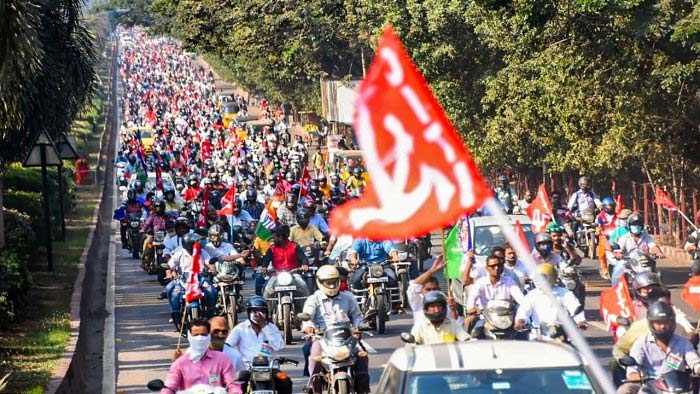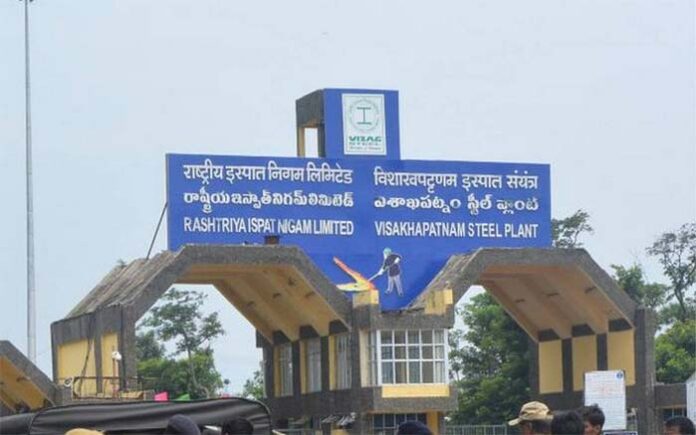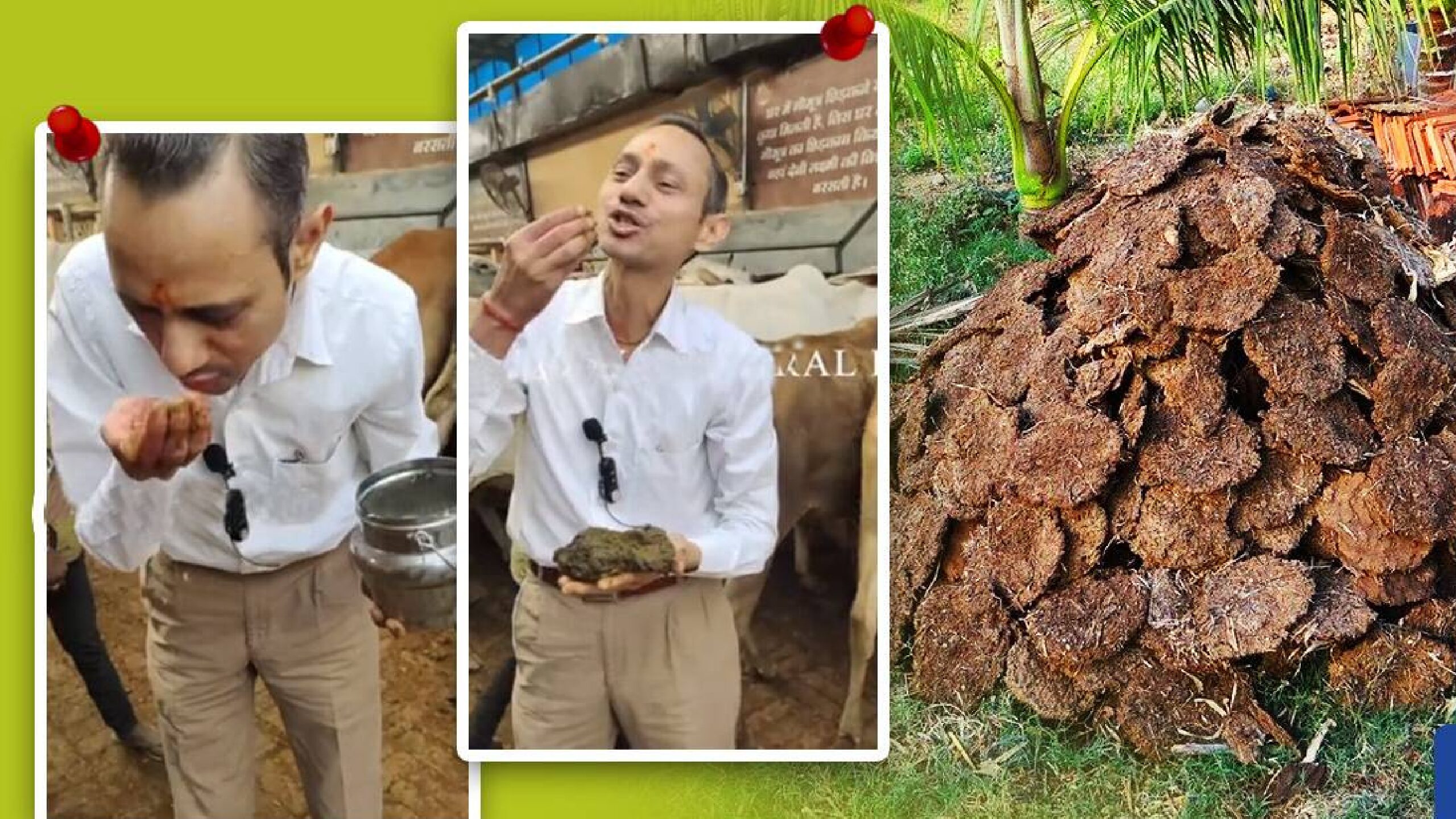- The navaratna firm was forced by Centre to incur losses
- Referred to BIFR by Vajapayee govt. in 2003-04
- Centre allows corrupt businessmen to export iron ore to China
- Forces VSP to buy ore at an exorbitant price by not allocating captive mines
- How can the Cantre valuate lives of 32 persons killed in agitation?
Government allocates captive mines to private steel plants but not to its own Visakha Steel Plant. Private Contractors such as Gali Janardana Reddy get mining contract, extract the iron ore and sells it to China to make profits for themselves. But he will not be asked to sell first to Visakha Steel Plant. One of Navaratna of Public Enterprises – Visakha Steel Plant is made to starve of raw material by the Government, being hundred per cent share holder. The Governments –whether of Congress or BJP- deliberately allowed the VSP to suffer losses and then blame it as non-profitable to sell off at throw away price to some crony capitalist for their own ultimate benefit.
Invoking nationalism
Government bans China apps invoking ‘nationalism’, but does not stop export of iron ore, at the cost of its own steel plants. Around 80 per cent of export of iron ore from India is directed to China. It allows corrupt private contractors to profit, private steel plants to enhance their gains but does not care for the plants like VSP. Super powers like China and US are not spending their natural resources, not extracting oil and iron ore but purchasing the raw material from other countries. China is selling finished steel products from our own iron ore and dumping them in India. For China our country is a dumping yard. And we call ourself ‘Atma Nirbhar’ and ‘Made in India.’
Also Read : Vizag Steel Plant : TDP gets a breather
The Nationalist Government does not do anything to prevent this. No plant to save our resources, no restrictions on selling raw material, no anti-dumping measures, and nothing to secure the interests of the nation. Selling is no great efficient administration. It is like lazy heir surviving by selling the property developed by grandparents. Selling family silver for eating it amounts to highest act of inefficiency, irresponsibility and dishonesty. Is this the nationalism and patriotism?
Breach of trust
Mines are national wealth, which means the past, present and future generations own it. The Government elected for five years has no right to sell this property. It is just a manager of this trust property. Allotting mines to private people and selling iron ore like this to China etc, is nothing but breach of that trust. Is there any element of patriotism in this reckless policy? It is a shame that some of the defective politicians and defecting leaders are appreciating this kind of worst anti-national and anti-people policies. It’s a vicious circle deliberately promoted by the successive governments, to starve even the efficient and profitable public ventures like VSP and put it up for sale under the camouflage of strategic disinvestment.
Also Read : Ghanta Srinivas resigns in protest against Centre’s decision
Mischief
Disinvestment means withdrawing from some shares of a public enterprise and allowing others to purchase them. In some cases, Government retains 51 per cent shares and management of the companies and at its discretion reduces to 49 and gives up control in favour of favourable companies. Nothing of this sort is being done in case of Visakha Steel Plant. They are selling it hundred per cent, and calling it mischievously ‘disinvestment’, which is not.
VSP –result of people’s agitation
The center has unveiled its plan to sell away the Navaratna Public Enterprise – Vizag Steel Plant. In 1965, an Anglo-American consortium had certified that Visakhapatnam was a suitable place for a steel plant. But PM Indira Gandhi rejected it in 1966 leading to a strong agitation. Veteran freedom fighter Tenneti Viswanatham led the movement and T Amritharao took to indefinite hunger strike. On November 1, 1966 police opened fire killing nine persons. In 1970, Indira Gandhi declared the establishment of the VSP and she came to city to lay foundation in 1971.
Also Read : The Violence and Hope for solution
Centre got back more than what it invested
The plant had increased steel production from 3.4 million tonnes to 7.3 million tonnes with its own funds and with bank loans reflecting its financial and managerial strength. While the Centre’s initial investment was around Rs. 4900 crore, the RINL has paid back Rs 43,000 crore to both the Centre and Andhra Pradesh through various taxes and dividends so far. Which means the centre did not suffer any loss but remained in profits, though it did not give single paisa in the last 25 years. It has no moral right to say that VSP should be sold out because of its losses. Two main reasons for the losses are that the VSP had to bear the burden of interest for bank loans it took for increasing the production and had to purchase thousands of tonnes of iron ore every day at higher cost as the Centre did not allocate mines to its own unit.
Kurupam Zamindars’ benevolence
The Kurupam Zamindars have donated 6,000 acres of land in 1970 for Vizag Steel Plant. Then a new company called Rashtriya Ispat Nigam Limited (RINL) was formed on 18 February 1982. Thus the Visakhapatnam Steel Plant was separated from SAIL and RINL was made the corporate entity of Visakhapatnam Steel Plant in April 1982.
Also Read : Law and people are victims of this ego battle
Expansion
On 20 May 2009, Prime Minister Manmohan Singh launched the expansion project of Visakhapatnam Steel Plant from a capacity of 3.6 MT to 6.3 MT at a cost of Rs. 8,692 crore. But the investment was revised to Rs. 14,489 crore with classification – (1) Expenditure for the financial year 2009-10 was Rs 1840 crores, (2) Rs 5883 crores since inception of the project and (3) Total commitment, including enabling works, steel procurement, consultancy, spares, etc. was Rs. 11591 crores as on 25 March 2010.
VSP for 25% of Visakha population
The VSP is the first shore-based integrated steel plant in the entire country. It has 16 thousand permanent and around 20 thousand contract workers and provides indirect livelihood to 65 thousand people. Five lakh people, a quarter of population of Visakha depend on this factory, for which the then Prime Minister laid foundation stone in 1977. It began production in 1992. The steel plant has a capacity of 7.3 million tonnes per annum with two subsidiaries – The Orissa Minerals Development Company Ltd (OMDC) and The Bisra Stone Lime Company Ltd (BSLC) – and runs RINMOIL Ferro Alloys Pvt Ltd, an equal joint venture with Manganese Ore (India) Limited Company (MOIL) and RINL Power Grid TLT Pvt Ltd, also an equal joint venture with Power Grid Corporation of India Ltd. In 2020, under the directions of the Union Steel Ministry, RINL signed a Memorandum of Understanding (MoU) with South Korean Steel Corporation POSCO company to set up a joint venture on the plant’s land in Visakhapatnam.
Also Read : How can Courts decide mala fides issues between two wings of State?
No funds and no mines
Who starved the VSP? Why captive mines were not given to it? The Centre has to take sole responsibility for this deliberate slow-killer decision, by not allocating mines as captive mines for uninterrupted supply of iron ore. In spite of trade union’s continuous demand for allocation of captive mines over a few years, there was no response from the centre and state failed to build pressure to secure allocation of mines, which could have drastically reduced the losses. While allocating the mines to private companies and not giving any mine to its own unit is surprising act against the people and dent to public exchequer.
Blaming for losses
It’s a shame that Centre is blaming the VSP for losses, hiding its own role. The Ministry says VSP is suffering losses and it cannot afford losses anymore. Rasthriya Ispat Nigam Limited (RINL), the Corporate name of the Visakha Steel Plant, has incurred net losses worth Rs 1,321 crore in 2017-18 but made a net profit of Rs 96 crore in 2018-19. Union leaders say: “It is only in recent years that the plant was incurring losses, mainly owing to the crisis in the steel industry. Another main reason is due to the non-allotment of captive mines in spite of numerous requests. The plant can expand and revive on its own with minimal government support”.
Also Read : 1.3 Lakh farmers are consulted through webinars! And 2.23 crore contacted by SMS!!
Reason for under performance
With an installed capacity of 21 million tonnes per year, the Visakhapatnam Steel Plant has presently been operating with a production capacity of only 7.3 million tonnes. The basic reason for this underperformance of the plant is lack of raw material. Unlike Steel Authority of India Limited (SAIL), Tata Steel, Jindal Steel and other such plants, the VSP does not have its captive iron ore mine. We have been depending on the supplies from Bailadila mines being run by the National Mineral Development Corporation and importing coking coal from Austria. The other steel plants have their own captive mines as allocated by Indian Government, they are able to get the iron ore at a cost of ₹1500 per tonne, whereas the RINL was compelled to spend Rs. 5,260 per tonne. As the requirement of VSP is 20,000 tonnes every day, it has to spend Rs 5500 x 20,000 per day incurring huge losses to the company.
Instead of allocating captive mine
Instead of facilitating the supply of raw material by allotting captive mines, the Government has referred it in 2003-04 to the Board for Industrial Finance and Reconstruction (BIFR) for winding up the company due to losses. Then there was a massive agitation by the workers, employees and the people, and the promise of the workers to work hard and turn the plant into profits within two years. The VSP was saved as it could make some profits.
Also Read : KCR: I will be CM for another 10 years
The steel plant has a highly valuable asset in the form of huge tracts of land of 22000 acres. At the present market value, each acre costs around Rs. 5 crore. So, the land value itself is more than one lakh crore of rupees. The Centre is likely to sell this prime property to private parties for a song.

The workers gave some more details which reveal the real reasons for the status of VSP. “It must be recalled that the Central Government has invested Rs 4,900 crore in the plant since its inception but the state government had made an investment of about Rs 42,000 crore.”
Also Read : Revanth pins hopes on TPCC Chief post
Privatisation by a tweet
The present Union Cabinet had cleared the privatisation of Rashtriya Ispat Nigam Ltd (RINL) according to a tweet by Tuhin Kanta Pandey, Secretary of DIPAM (Department of Investment & Public Asset Management) on February 3. The RINL strategic sale proceeds would be part of the disinvestment target for next fiscal year. The government has budgeted Rs 1.75 lakh crore from disinvestment in 2021-22 fiscal beginning April 1. That tweet reads: “The CCEA (Cabinet Committee on Economic Affairs) had, on January 27, 2021, given in-principle approval for 100% strategic disinvestment of the GoI (government of India) shareholding in RINL along with management control by way of privatisation,” Pandey tweeted.
AP CM Jagan Mohan Reddy requested the Centre not to sell the VSP, while pointing out that RINL achieved its highest ever capacity utilisation of 6.3 MTPA against the capacity of 7.3 MTPA in December 2020, posting a monthly profit of close to Rs 200 crore.
Time for people of two Telugu States to unite
The time has come for the people of the two Telugu state to unite and fight for protection of the icon of Telugu self-respect – the VSP – for which there were agitations in all the districts of the undivided Andhra Pradesh in 1970s under the name “Vishakha Ukku Andhrula Hakku” for which 32 agitators laid down their lives.
Also Read : Why did KCR warn party leaders?
When the Centre sells this unit, how does it value the 32 lives and the donation of 6000 acres of land by local Kurupam Jamindars in 1970 and 16000 acres of land allocated by AP Government at throw away price? The Government, the donors and the people were expecting that it would help all round development of the state and generate employment for many.
The Visakhapatnam, the Steel City (Ukku Nagaram, the name assumed because of steel plant) has woken up to this decision of the centre without consulting anybody, its people, employees of VSP and the trade unions came together and demanded together for withdrawal of the decision to disinvest the Government’s share in VSP.
Also Read : How Chandrababu Naidu diverted temple funds?




